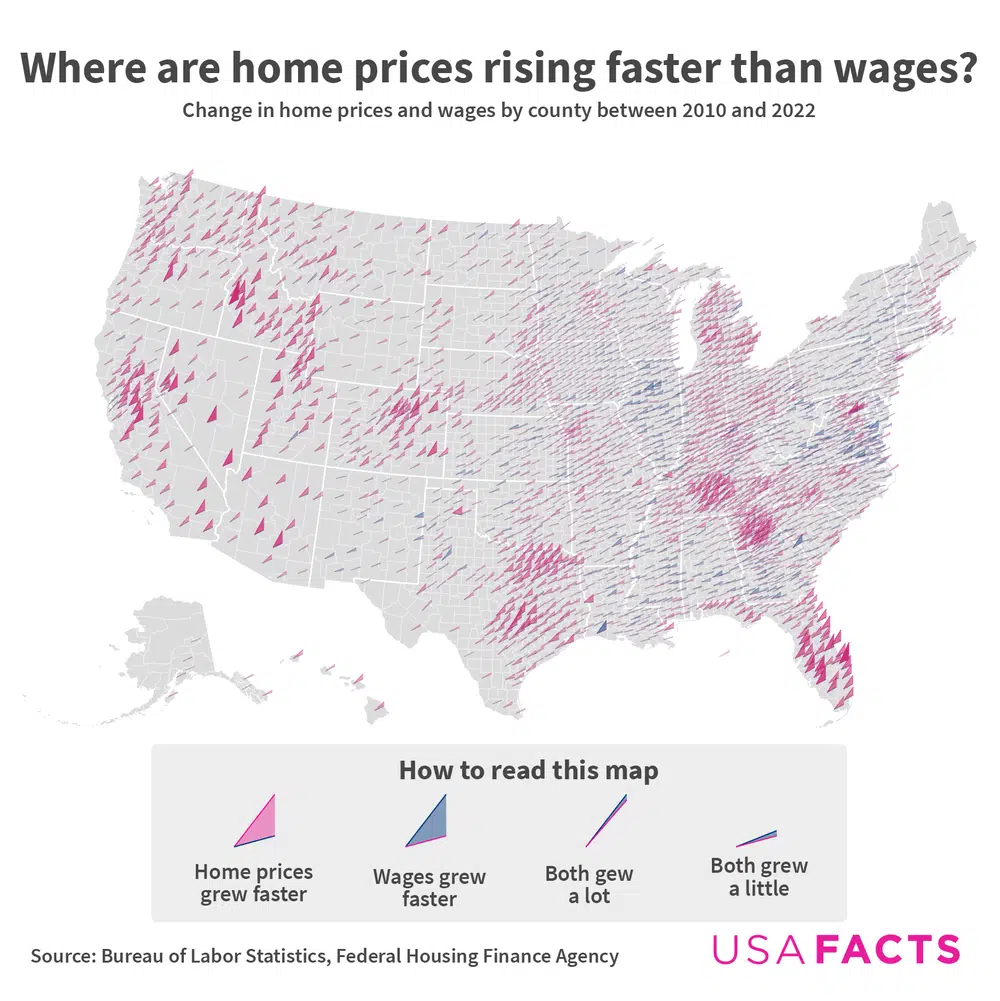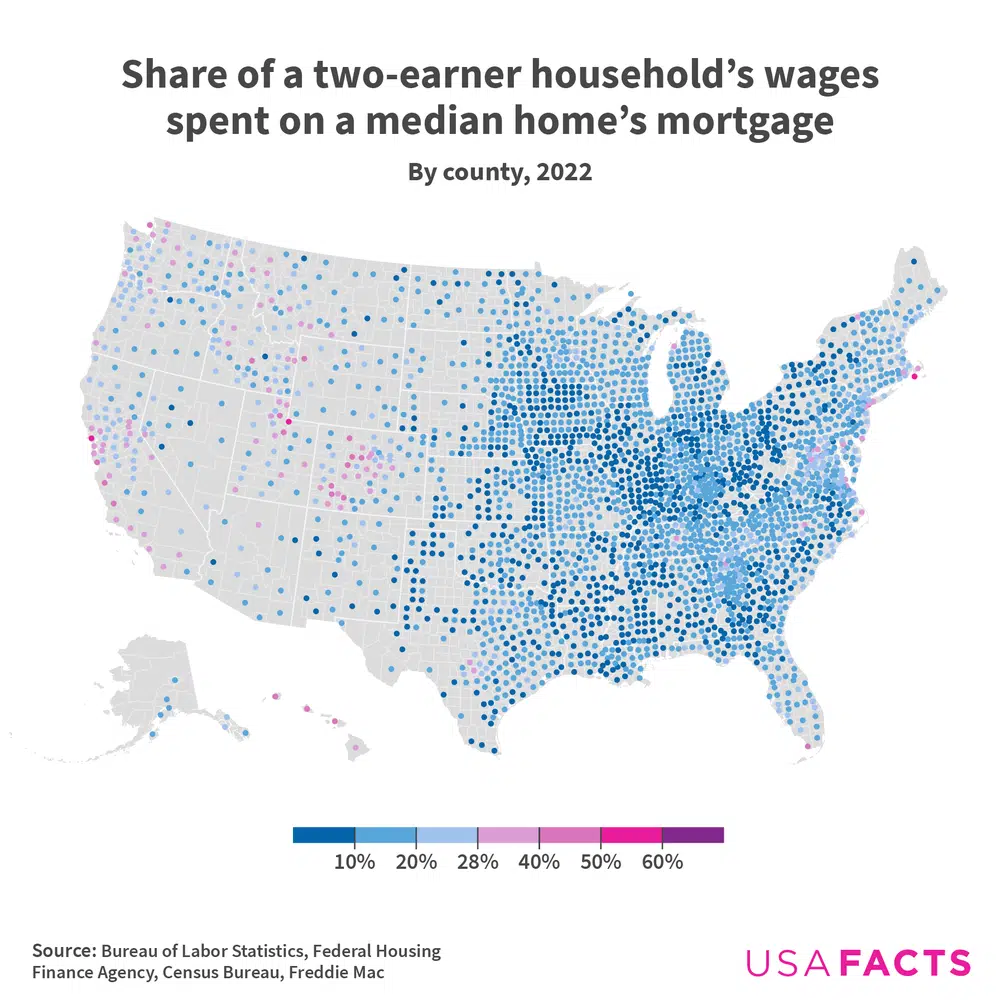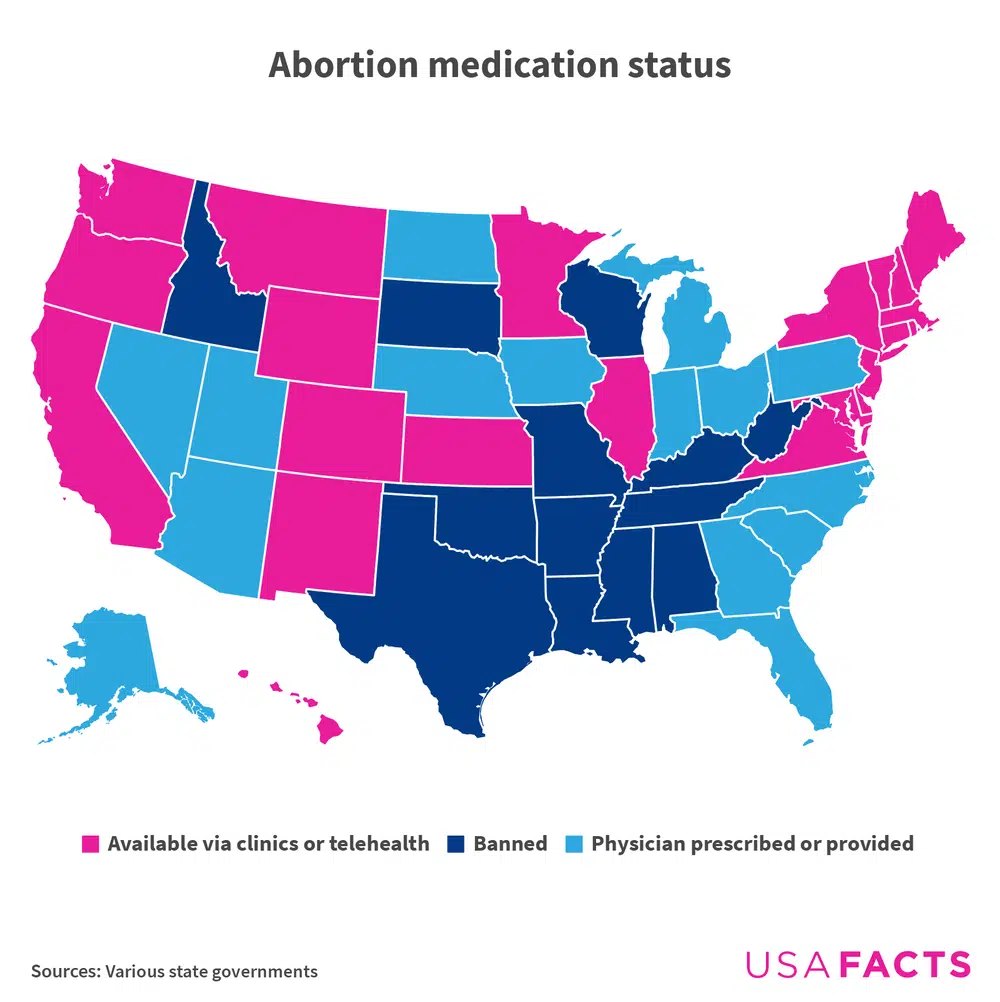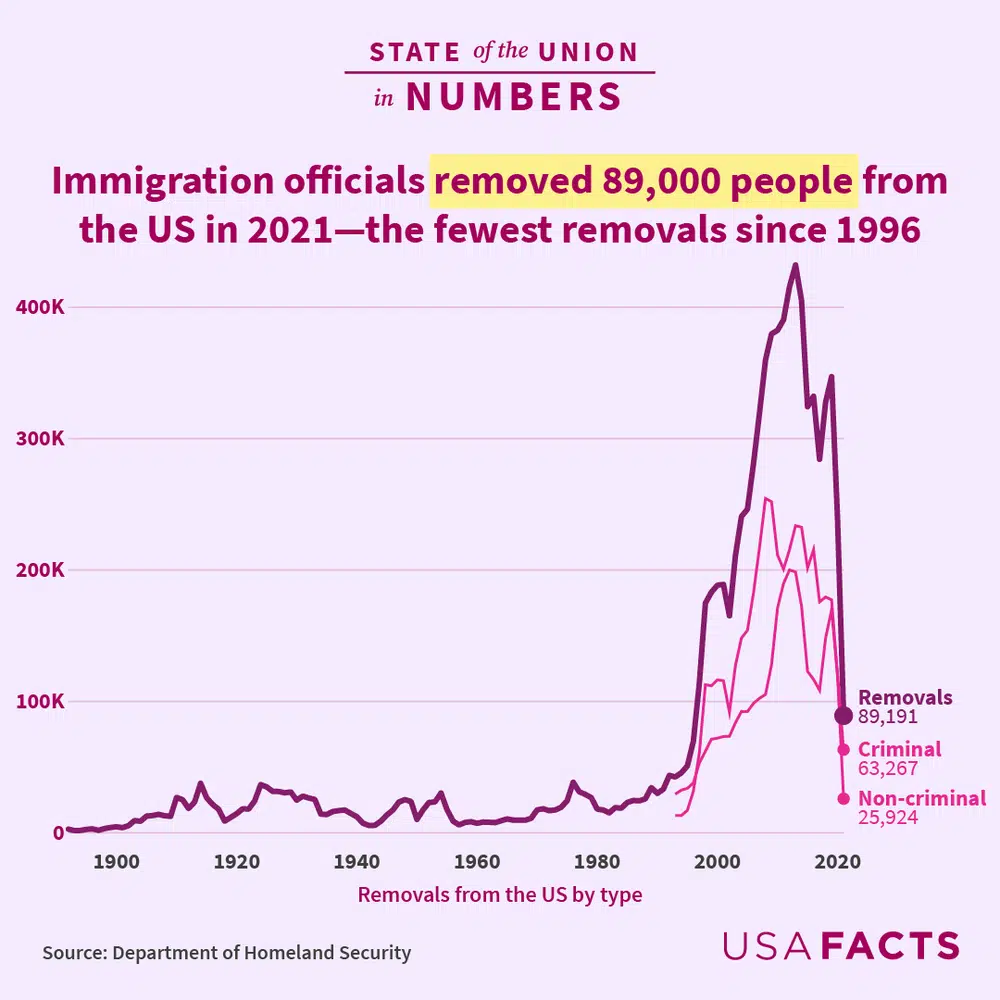Economy
How much will Thanksgiving dinner cost in 2024?

Home costs in the United States have outpaced wage growth over the past decade. In particular, prices in nearly every county nationwide outpaced wages during the pandemic. This new visual from USAFacts provides the historical numbers to help you compare 28 years of home prices against wages. Here are some things you’ll find in the viz:


Find your location to track how wages and home prices have changed over time. Have wages overtaken prices or vice versa? Jump into the data to find out.
A US district judge in Texas suspended the Food and Drug Administration’s nationwide approval of mifepristone, a medication for abortion prescribed in a two-drug regimen, usually to end a pregnancy or treat miscarriages. Last Friday, the US Supreme Court temporarily blocked the lower court ruling. Here is an overview of where abortion medication is available or banned.

US map tracking where medication abortion is available, restricted, or banned.
See more here. Then, read about various abortion legislation, including states that passed laws limiting or widening access and how the 2022 midterm elections affected access to the procedure.
Last week, House Speaker Kevin McCarthy unveiled his plan to raise the debt ceiling while also calling for spending cuts. Here's a refresher on the debt ceiling and why it matters.
Last Saturday was Earth Day. Be sure to explore government data on climate and the American environment.
Take the weekly fact quiz here. Can you ace it?

Line chart of the number of criminal and non-criminal removals of people from the US dating back past 1900. Numbers started spiking just before 2000.
Immigration officials removed 89,000 people from the US in 2021, the lowest number since 1996. This decline was partly related to COVID-19 restrictions and fewer people coming to the US in 2020.
About 71% of removals in fiscal year 2021 were for criminal offenses, the top three being drugs, immigration violations, or assault.
Newsletter
Keep up with the latest data and most popular content.